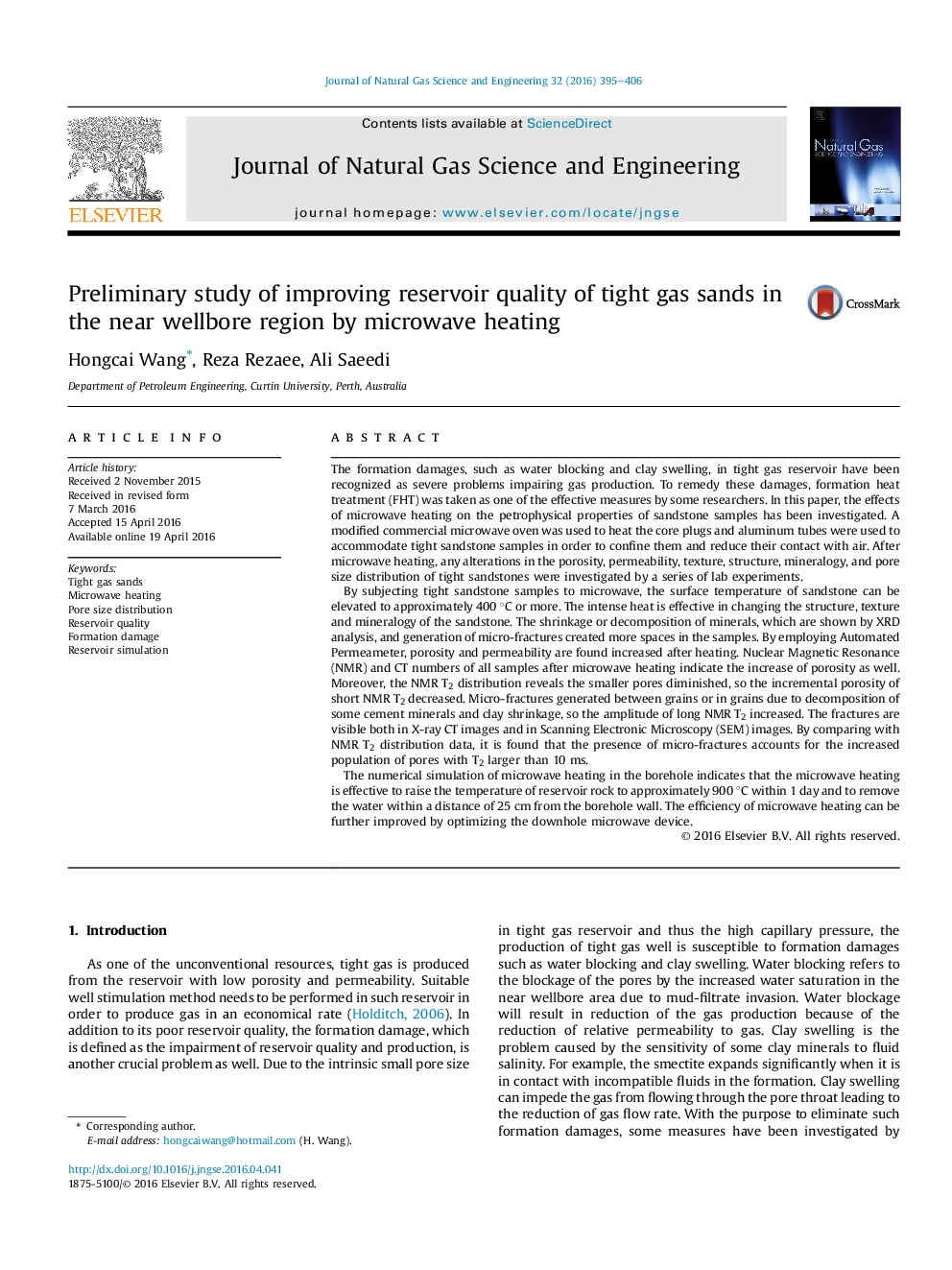| کد مقاله | کد نشریه | سال انتشار | مقاله انگلیسی | نسخه تمام متن |
|---|---|---|---|---|
| 1757241 | 1523009 | 2016 | 12 صفحه PDF | دانلود رایگان |
• Creative application of microwave heating in formation heat treatment (FHT).
• Improvement of reservoir quality by microwave heating.
• NMR study of pore size distribution after microwave heating.
• Investigation of changes in sandstone with X-ray CT, SEM and XRD.
• Numerical simulation of removing moisture phase using microwave heating.
The formation damages, such as water blocking and clay swelling, in tight gas reservoir have been recognized as severe problems impairing gas production. To remedy these damages, formation heat treatment (FHT) was taken as one of the effective measures by some researchers. In this paper, the effects of microwave heating on the petrophysical properties of sandstone samples has been investigated. A modified commercial microwave oven was used to heat the core plugs and aluminum tubes were used to accommodate tight sandstone samples in order to confine them and reduce their contact with air. After microwave heating, any alterations in the porosity, permeability, texture, structure, mineralogy, and pore size distribution of tight sandstones were investigated by a series of lab experiments.By subjecting tight sandstone samples to microwave, the surface temperature of sandstone can be elevated to approximately 400 °C or more. The intense heat is effective in changing the structure, texture and mineralogy of the sandstone. The shrinkage or decomposition of minerals, which are shown by XRD analysis, and generation of micro-fractures created more spaces in the samples. By employing Automated Permeameter, porosity and permeability are found increased after heating. Nuclear Magnetic Resonance (NMR) and CT numbers of all samples after microwave heating indicate the increase of porosity as well. Moreover, the NMR T2 distribution reveals the smaller pores diminished, so the incremental porosity of short NMR T2 decreased. Micro-fractures generated between grains or in grains due to decomposition of some cement minerals and clay shrinkage, so the amplitude of long NMR T2 increased. The fractures are visible both in X-ray CT images and in Scanning Electronic Microscopy (SEM) images. By comparing with NMR T2 distribution data, it is found that the presence of micro-fractures accounts for the increased population of pores with T2 larger than 10 ms.The numerical simulation of microwave heating in the borehole indicates that the microwave heating is effective to raise the temperature of reservoir rock to approximately 900 °C within 1 day and to remove the water within a distance of 25 cm from the borehole wall. The efficiency of microwave heating can be further improved by optimizing the downhole microwave device.
Journal: Journal of Natural Gas Science and Engineering - Volume 32, May 2016, Pages 395–406
